Cheng Yu
Language Model Based Text-to-Audio Generation: Anti-Causally Aligned Collaborative Residual Transformers
Oct 06, 2025Abstract:While language models (LMs) paired with residual vector quantization (RVQ) tokenizers have shown promise in text-to-audio (T2A) generation, they still lag behind diffusion-based models by a non-trivial margin. We identify a critical dilemma underpinning this gap: incorporating more RVQ layers improves audio reconstruction fidelity but exceeds the generation capacity of conventional LMs. To address this, we first analyze RVQ dynamics and uncover two key limitations: 1) orthogonality of features across RVQ layers hinders effective LMs training, and 2) descending semantic richness in tokens from deeper RVQ layers exacerbates exposure bias during autoregressive decoding. Based on these insights, we propose Siren, a novel LM-based framework that employs multiple isolated transformers with causal conditioning and anti-causal alignment via reinforcement learning. Extensive experiments demonstrate that Siren outperforms both existing LM-based and diffusion-based T2A systems, achieving state-of-the-art results. By bridging the representational strengths of LMs with the fidelity demands of audio synthesis, our approach repositions LMs as competitive contenders against diffusion models in T2A tasks. Moreover, by aligning audio representations with linguistic structures, Siren facilitates a promising pathway toward unified multi-modal generation frameworks.
Synchronized Video-to-Audio Generation via Mel Quantization-Continuum Decomposition
Mar 10, 2025Abstract:Video-to-audio generation is essential for synthesizing realistic audio tracks that synchronize effectively with silent videos. Following the perspective of extracting essential signals from videos that can precisely control the mature text-to-audio generative diffusion models, this paper presents how to balance the representation of mel-spectrograms in terms of completeness and complexity through a new approach called Mel Quantization-Continuum Decomposition (Mel-QCD). We decompose the mel-spectrogram into three distinct types of signals, employing quantization or continuity to them, we can effectively predict them from video by a devised video-to-all (V2X) predictor. Then, the predicted signals are recomposed and fed into a ControlNet, along with a textual inversion design, to control the audio generation process. Our proposed Mel-QCD method demonstrates state-of-the-art performance across eight metrics, evaluating dimensions such as quality, synchronization, and semantic consistency. Our codes and demos will be released at \href{Website}{https://wjc2830.github.io/MelQCD/}.
Accelerating Vision Diffusion Transformers with Skip Branches
Nov 26, 2024



Abstract:Diffusion Transformers (DiT), an emerging image and video generation model architecture, has demonstrated great potential because of its high generation quality and scalability properties. Despite the impressive performance, its practical deployment is constrained by computational complexity and redundancy in the sequential denoising process. While feature caching across timesteps has proven effective in accelerating diffusion models, its application to DiT is limited by fundamental architectural differences from U-Net-based approaches. Through empirical analysis of DiT feature dynamics, we identify that significant feature variation between DiT blocks presents a key challenge for feature reusability. To address this, we convert standard DiT into Skip-DiT with skip branches to enhance feature smoothness. Further, we introduce Skip-Cache which utilizes the skip branches to cache DiT features across timesteps at the inference time. We validated effectiveness of our proposal on different DiT backbones for video and image generation, showcasing skip branches to help preserve generation quality and achieve higher speedup. Experimental results indicate that Skip-DiT achieves a 1.5x speedup almost for free and a 2.2x speedup with only a minor reduction in quantitative metrics. Code is available at https://github.com/OpenSparseLLMs/Skip-DiT.git.
FaceChain-FACT: Face Adapter with Decoupled Training for Identity-preserved Personalization
Oct 16, 2024



Abstract:In the field of human-centric personalized image generation, the adapter-based method obtains the ability to customize and generate portraits by text-to-image training on facial data. This allows for identity-preserved personalization without additional fine-tuning in inference. Although there are improvements in efficiency and fidelity, there is often a significant performance decrease in test following ability, controllability, and diversity of generated faces compared to the base model. In this paper, we analyze that the performance degradation is attributed to the failure to decouple identity features from other attributes during extraction, as well as the failure to decouple the portrait generation training from the overall generation task. To address these issues, we propose the Face Adapter with deCoupled Training (FACT) framework, focusing on both model architecture and training strategy. To decouple identity features from others, we leverage a transformer-based face-export encoder and harness fine-grained identity features. To decouple the portrait generation training, we propose Face Adapting Increment Regularization~(FAIR), which effectively constrains the effect of face adapters on the facial region, preserving the generative ability of the base model. Additionally, we incorporate a face condition drop and shuffle mechanism, combined with curriculum learning, to enhance facial controllability and diversity. As a result, FACT solely learns identity preservation from training data, thereby minimizing the impact on the original text-to-image capabilities of the base model. Extensive experiments show that FACT has both controllability and fidelity in both text-to-image generation and inpainting solutions for portrait generation.
Dynamic Depth Decoding: Faster Speculative Decoding for LLMs
Aug 30, 2024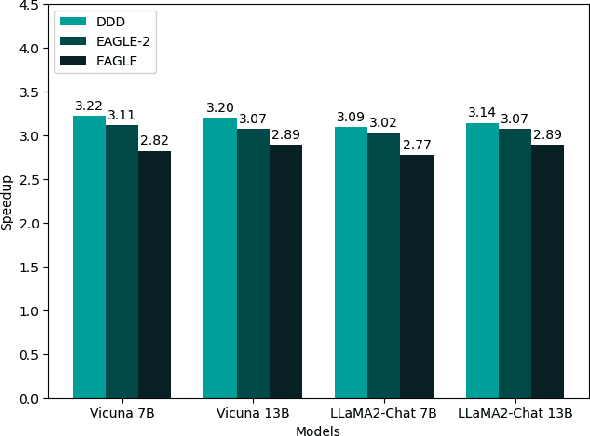
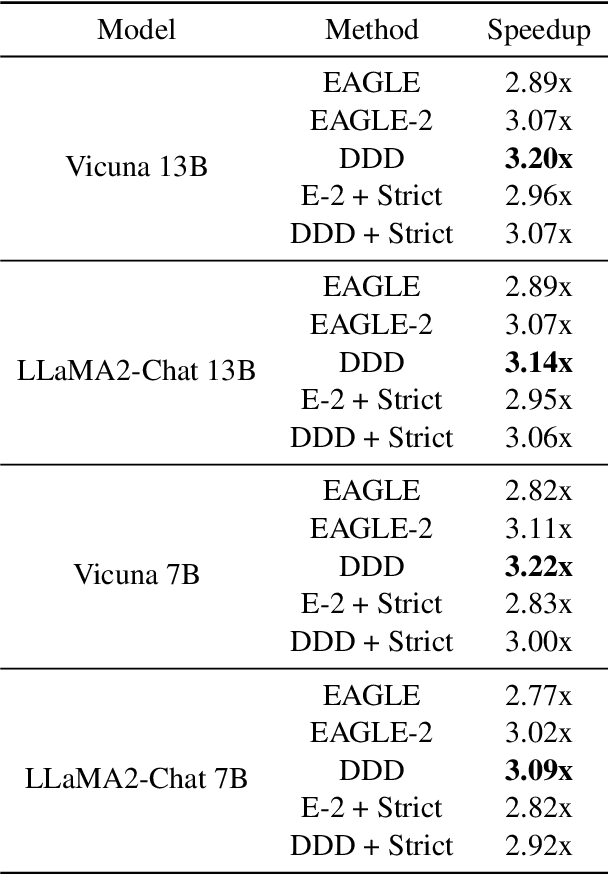
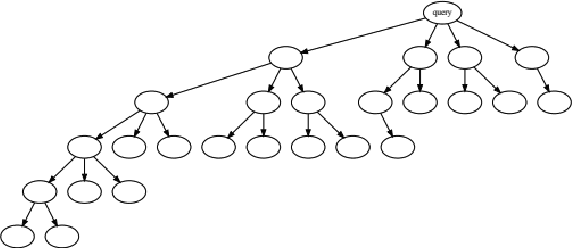
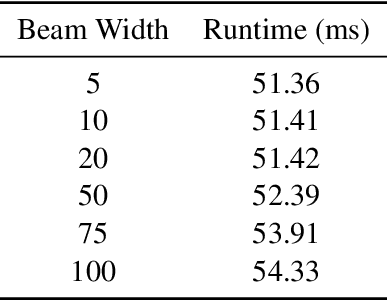
Abstract:The acceleration of Large Language Models (LLMs) with speculative decoding provides a significant runtime improvement without any loss of accuracy. Currently, EAGLE-2 is the state-of-the-art speculative decoding method, improving on EAGLE with a dynamic draft tree. We introduce Dynamic Depth Decoding (DDD), which optimises EAGLE-2's tree drafting method using a dynamic depth. This extends the average speedup that EAGLE-2 achieves over EAGLE by $44\%$, giving DDD an average speedup of $3.16$x.
AV-CrossNet: an Audiovisual Complex Spectral Mapping Network for Speech Separation By Leveraging Narrow- and Cross-Band Modeling
Jun 17, 2024



Abstract:Adding visual cues to audio-based speech separation can improve separation performance. This paper introduces AV-CrossNet, an audiovisual (AV) system for speech enhancement, target speaker extraction, and multi-talker speaker separation. AV-CrossNet is extended from the CrossNet architecture, which is a recently proposed network that performs complex spectral mapping for speech separation by leveraging global attention and positional encoding. To effectively utilize visual cues, the proposed system incorporates pre-extracted visual embeddings and employs a visual encoder comprising temporal convolutional layers. Audio and visual features are fused in an early fusion layer before feeding to AV-CrossNet blocks. We evaluate AV-CrossNet on multiple datasets, including LRS, VoxCeleb, and COG-MHEAR challenge. Evaluation results demonstrate that AV-CrossNet advances the state-of-the-art performance in all audiovisual tasks, even on untrained and mismatched datasets.
Using fine-tuning and min lookahead beam search to improve Whisper
Sep 19, 2023



Abstract:The performance of Whisper in low-resource languages is still far from perfect. In addition to a lack of training data on low-resource languages, we identify some limitations in the beam search algorithm used in Whisper. To address these issues, we fine-tune Whisper on additional data and propose an improved decoding algorithm. On the Vietnamese language, fine-tuning Whisper-Tiny with LoRA leads to an improvement of 38.49 in WER over the zero-shot Whisper-Tiny setting which is a further reduction of 1.45 compared to full-parameter fine-tuning. Additionally, by using Filter-Ends and Min Lookahead decoding algorithms, the WER reduces by 2.26 on average over a range of languages compared to standard beam search. These results generalise to larger Whisper model sizes. We also prove a theorem that Min Lookahead outperforms the standard beam search algorithm used in Whisper.
Cross-Utterance Conditioned VAE for Speech Generation
Sep 08, 2023



Abstract:Speech synthesis systems powered by neural networks hold promise for multimedia production, but frequently face issues with producing expressive speech and seamless editing. In response, we present the Cross-Utterance Conditioned Variational Autoencoder speech synthesis (CUC-VAE S2) framework to enhance prosody and ensure natural speech generation. This framework leverages the powerful representational capabilities of pre-trained language models and the re-expression abilities of variational autoencoders (VAEs). The core component of the CUC-VAE S2 framework is the cross-utterance CVAE, which extracts acoustic, speaker, and textual features from surrounding sentences to generate context-sensitive prosodic features, more accurately emulating human prosody generation. We further propose two practical algorithms tailored for distinct speech synthesis applications: CUC-VAE TTS for text-to-speech and CUC-VAE SE for speech editing. The CUC-VAE TTS is a direct application of the framework, designed to generate audio with contextual prosody derived from surrounding texts. On the other hand, the CUC-VAE SE algorithm leverages real mel spectrogram sampling conditioned on contextual information, producing audio that closely mirrors real sound and thereby facilitating flexible speech editing based on text such as deletion, insertion, and replacement. Experimental results on the LibriTTS datasets demonstrate that our proposed models significantly enhance speech synthesis and editing, producing more natural and expressive speech.
FaceChain: A Playground for Identity-Preserving Portrait Generation
Aug 28, 2023



Abstract:Recent advancement in personalized image generation have unveiled the intriguing capability of pre-trained text-to-image models on learning identity information from a collection of portrait images. However, existing solutions can be vulnerable in producing truthful details, and usually suffer from several defects such as (i) The generated face exhibit its own unique characteristics, \ie facial shape and facial feature positioning may not resemble key characteristics of the input, and (ii) The synthesized face may contain warped, blurred or corrupted regions. In this paper, we present FaceChain, a personalized portrait generation framework that combines a series of customized image-generation model and a rich set of face-related perceptual understanding models (\eg, face detection, deep face embedding extraction, and facial attribute recognition), to tackle aforementioned challenges and to generate truthful personalized portraits, with only a handful of portrait images as input. Concretely, we inject several SOTA face models into the generation procedure, achieving a more efficient label-tagging, data-processing, and model post-processing compared to previous solutions, such as DreamBooth ~\cite{ruiz2023dreambooth} , InstantBooth ~\cite{shi2023instantbooth} , or other LoRA-only approaches ~\cite{hu2021lora} . Through the development of FaceChain, we have identified several potential directions to accelerate development of Face/Human-Centric AIGC research and application. We have designed FaceChain as a framework comprised of pluggable components that can be easily adjusted to accommodate different styles and personalized needs. We hope it can grow to serve the burgeoning needs from the communities. FaceChain is open-sourced under Apache-2.0 license at \url{https://github.com/modelscope/facechain}.
Cross-Utterance Conditioned VAE for Non-Autoregressive Text-to-Speech
May 09, 2022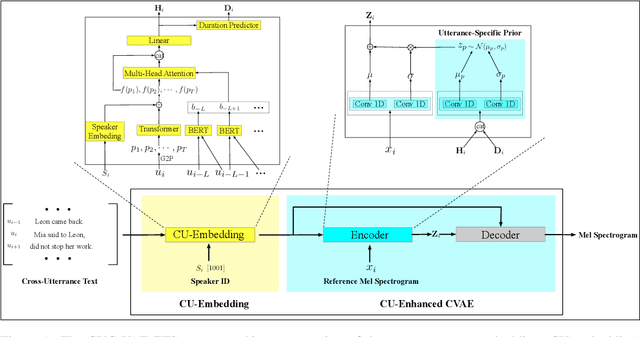

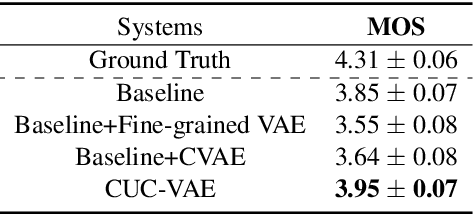
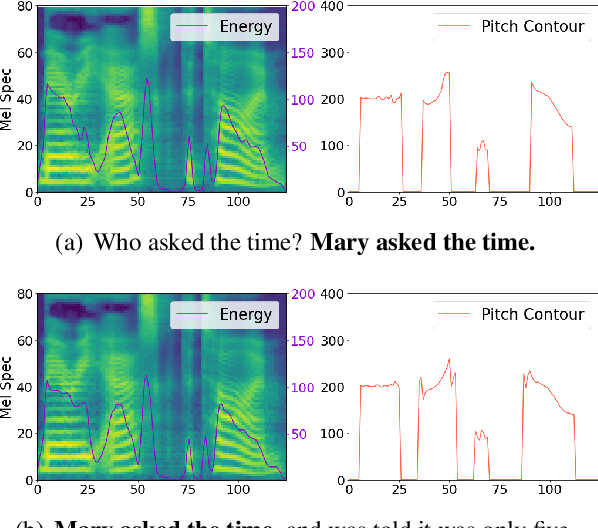
Abstract:Modelling prosody variation is critical for synthesizing natural and expressive speech in end-to-end text-to-speech (TTS) systems. In this paper, a cross-utterance conditional VAE (CUC-VAE) is proposed to estimate a posterior probability distribution of the latent prosody features for each phoneme by conditioning on acoustic features, speaker information, and text features obtained from both past and future sentences. At inference time, instead of the standard Gaussian distribution used by VAE, CUC-VAE allows sampling from an utterance-specific prior distribution conditioned on cross-utterance information, which allows the prosody features generated by the TTS system to be related to the context and is more similar to how humans naturally produce prosody. The performance of CUC-VAE is evaluated via a qualitative listening test for naturalness, intelligibility and quantitative measurements, including word error rates and the standard deviation of prosody attributes. Experimental results on LJ-Speech and LibriTTS data show that the proposed CUC-VAE TTS system improves naturalness and prosody diversity with clear margins.
 Add to Chrome
Add to Chrome Add to Firefox
Add to Firefox Add to Edge
Add to Edge